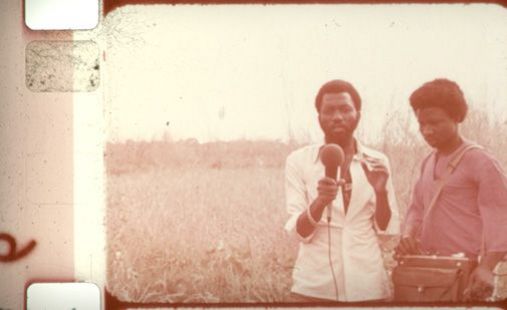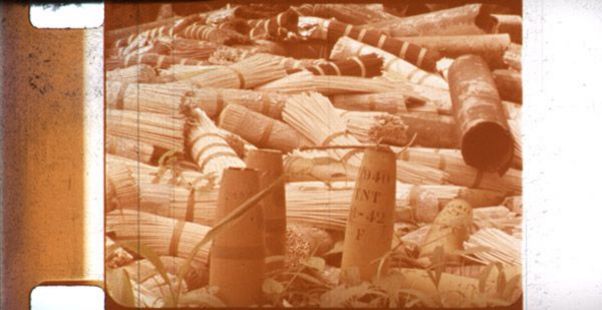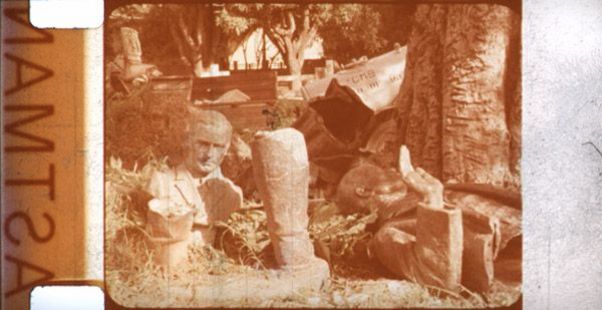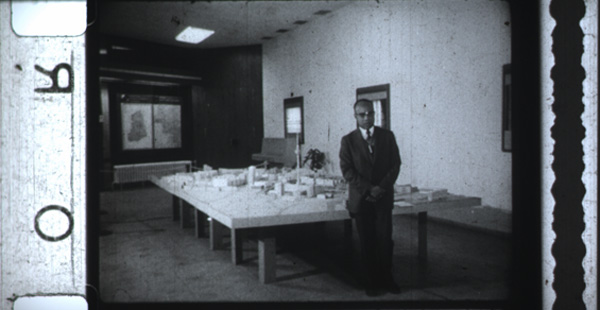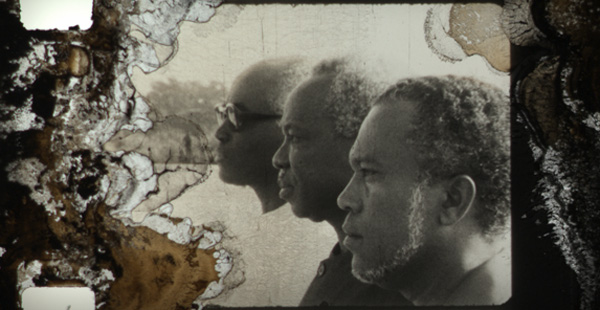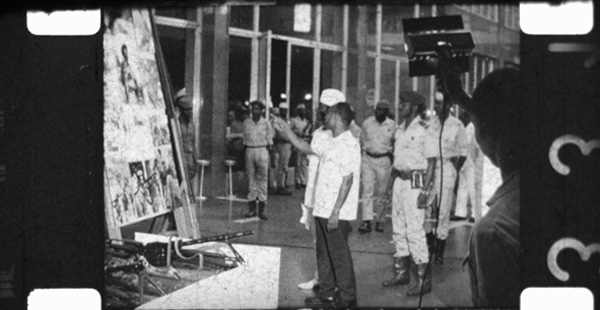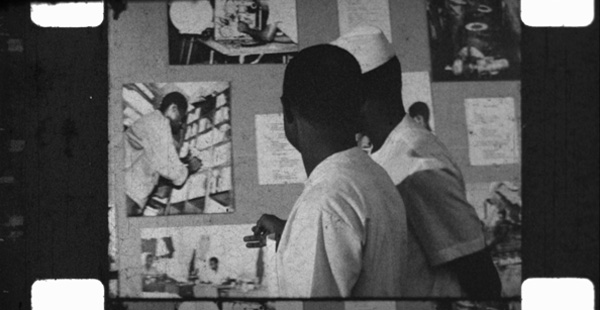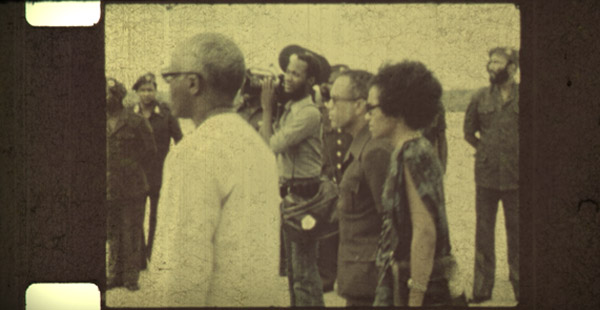The National Film Institute of Guinea-Bissau (INCA – Instituto Nacional de Cinema e Audiovisual) is home to important documentary material from the period of the country’s struggle for liberation (1963–1974) and first years of independence. There are also foreign film productions there which reflect the geopolitical relationships of solidarity with other countries in the 1970s.
The historical film material from the period of militant cinema in Guinea-Bissau was almost completely destroyed in the civil war of 1998/99. Only a small part of this material survived this destruction. As part of the "Animated Archive" project, the film holdings were able to be digitized with the support of the German Foreign Office’s Cultural Preservation program.
![]()
Flora Gomes and Julinho Camará shooting GUINE-BISSAU, 6 ANOS DEPOIS, 1980 (unfinished film) © INCA Guinea-Bissau, José Cobumba, Josefina Crato, Flora Gomes, Sana na N’Hada
![]()
Footage from GUINE-BISSAU, 6 ANOS DEPOIS, 1980 (unfinished film) © INCA Guinea-Bissau, José Cobumba, Josefina Crato, Flora Gomes, Sana na N’Hada
![]()
Footage from GUINE-BISSAU, 6 ANOS DEPOIS, 1980 (unfinished film) © INCA Guinea-Bissau, José Cobumba, Josefina Crato, Flora Gomes, Sana na N’Hada
![]()
Amílcar Cabral at Apartheid NO!, 1976 © DEFA
![]()
Aristides Pereira, Julius Nyerere, Luís Cabral, Bissau, 1976 (unedited footage) © INCA Guinea-Bissau, José Cobumba, Josefina Crato, Flora Gomes, Sana na N’Hada
![]()
Amílcar Cabral and Seku Touré at the week of Information at Palais du Peuple, Conakry September 1972 (unedited footage) © INCA Guinea-Bissau, José Cobumba, Josefina Crato, Flora Gomes, Sana na N’Hada
![]()
Amílcar Cabral and Seku Touré at the week of Information at Palais du Peuple, Conakry September 1972 (unedited footage) © INCA Guinea-Bissau, José Cobumba, Josefina Crato, Flora Gomes, Sana na N’Hada
![]()
Sana na N'Hada (in the back with camera) shooting O REGRESSO DE AMILCAR CABRAL, 1976 © INCA Guinea-Bissau, Lennart Malmer
